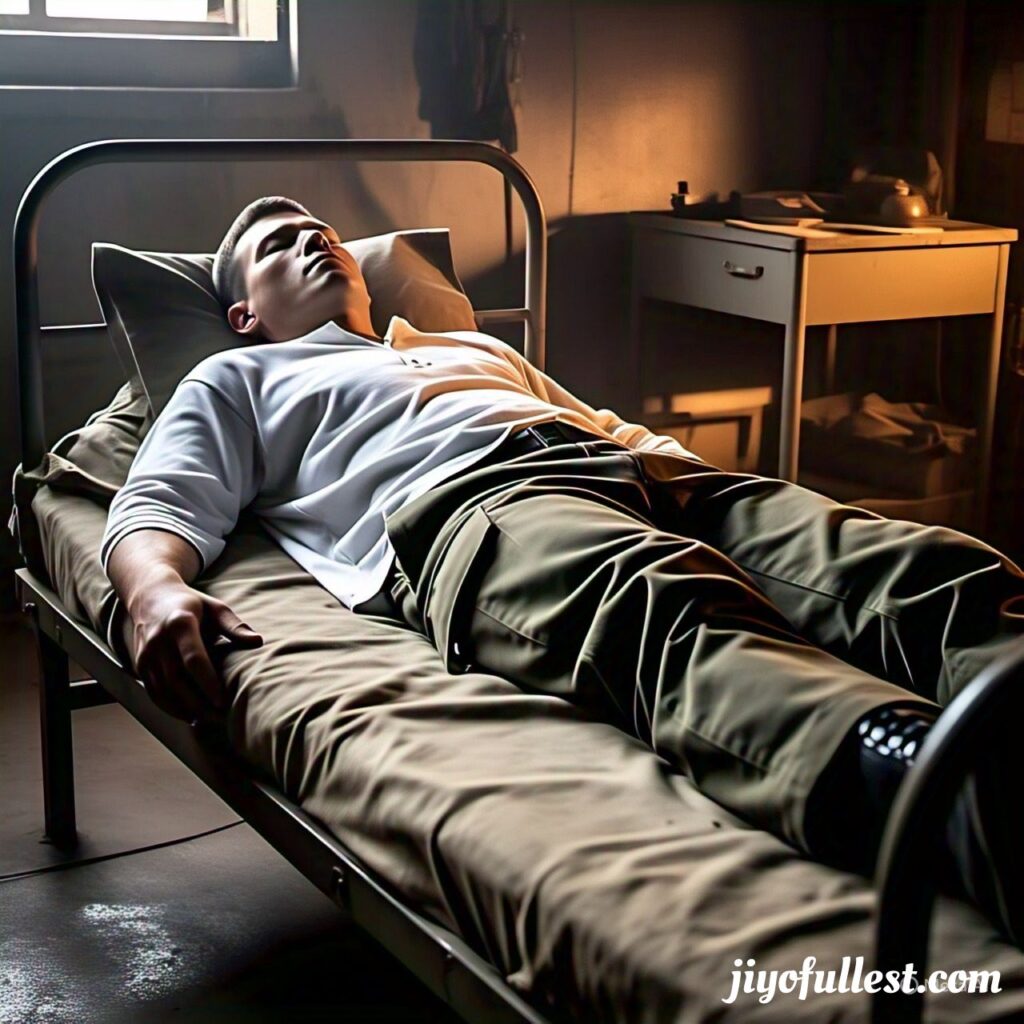Struggling to fall asleep fast? You’re not alone. In our fast-paced, stress-filled lives, it’s not unusual to spend hours tossing and turning before finally drifting off. But what if there were a proven technique to help you fall asleep in just two minutes?
That’s exactly what the Military Sleep Technique promises—and it’s backed by history, practice, and surprising success. Originally developed by the U.S. Navy Pre-Flight School to help pilots sleep under any condition, this method is now gaining traction as a fast and effective sleep solution.
In this blog post, we’ll break down what the military sleep technique is, how to do it correctly, the science behind it, and how you can adapt it for your own nighttime routine.
Table of Contents
ToggleWhat Is the Military Sleep Technique?
The Military Sleep Technique is a step-by-step relaxation method designed to help you fall asleep quickly—even in less-than-ideal environments. The technique was first introduced in the book Relax and Win: Championship Performance by Lloyd Bud Winter, which documented how U.S. Navy pilots were trained to fall asleep within 2 minutes, even under stressful combat conditions.
It works by systematically relaxing the body and mind, allowing you to shut down physically and mentally so you can drift into sleep quickly.

Step-by-Step: How to Do the Military Sleep Technique the Right Way
Here’s how to perform the technique correctly:
Step 1: Relax Your Face
Start by releasing all tension in your face. Focus on relaxing:
Forehead
Eyelids
Jaw
Tongue
Cheeks
Let your face go completely slack. Most people don’t realize how much tension they carry in their facial muscles.
Step 2: Drop Your Shoulders
Let your shoulders drop as low as possible. This should feel like a release of pressure. Then, let your arms relax completely—starting from your upper arms down to your forearms, wrists, and fingers.
Step 3: Exhale and Relax Your Chest
Take a deep breath and slowly exhale. As you do, allow your chest to relax and sink into the bed. Don’t force your breathing—just let it slow naturally.
Step 4: Relax Your Legs
Start from the top and work your way down:
Relax your thighs
Let your calves go limp
Loosen your ankles, feet, and toes
Imagine each part of your lower body getting heavier and softer.
Step 5: Clear Your Mind for 10 Seconds
This is often the most challenging part. The goal is to shut off mental chatter. Use one of these mental tricks to distract your thoughts:
Visualize lying in a canoe on a calm lake under a clear blue sky.
Imagine yourself nestled in a hammock in a quiet, dark room.
Silently repeat the words “don’t think… don’t think…” for about 10 seconds.
After about six weeks of consistent practice, 96% of people reportedly mastered the technique and could fall asleep in under two minutes.
Why the Military Sleep Technique Works
The technique works because it forces both your body and mind into a relaxed state. Here’s how:
Physical Relaxation: By consciously relaxing each muscle group, you activate your parasympathetic nervous system—the part responsible for rest and recovery.
Mental Stillness: The visualizations and mental repetition help to push intrusive thoughts away, making it easier for your brain to shut off.
Routine & Repetition: Like any skill, the more you practice, the more effective it becomes. Consistency trains your body to associate the technique with sleep.
How Long Does It Take to Work?
While some people report instant results, most need to practice the technique daily for 6 weeks to consistently fall asleep in 2 minutes or less. Stick with it—even if it doesn’t work right away.

Tips to Enhance the Military Sleep Method
Here are some ways to increase your success with the technique:
1. Practice During the Day
Try it during short naps or quiet moments—not just at bedtime. Training your mind to relax quickly takes practice.
2. Use Sleep-Friendly Conditions
Although the military technique is designed for any environment, creating a quiet, dark, and cool room can help you succeed faster.
3. Avoid Screens and Stimulants
Put your phone away at least an hour before bed and avoid caffeine in the evening. Blue light and stimulants disrupt melatonin production and your natural sleep rhythm.
4. Pair With Breathing Techniques
You can combine this method with box breathing or the 4-7-8 technique to slow your heart rate and increase relaxation.
Common Mistakes to Avoid
Trying Too Hard: Ironically, “trying” to fall asleep can keep you awake. Focus on relaxing, not sleeping.
Skipping Steps: The method is designed to be done in sequence. Skipping ahead can reduce its effectiveness.
Giving Up Too Soon: The method may take time to master. Be patient and practice consistently
This technique can be helpful for:
Insomniacs
Students under stress
Shift workers
Frequent travelers
Anyone with an overactive mind at night
It’s a completely natural, medication-free approach that trains your body and mind to work in sync for sleep.
FAQs About the Military Sleep Technique
1. Does the military sleep technique really work?
Yes, according to reports, the method helped 96% of U.S. Navy pilots fall asleep within two minutes after six weeks of practice. It’s most effective with consistent daily use.
2. How long does it take to master the technique?
While some people experience results within days, most people see consistent success after six weeks of daily practice.
3. Can I use this technique during the day for naps?
Absolutely. It works just as well for daytime naps and can be a great way to recharge quickly.
4. Is it safe to use for children or teens?
Yes, it’s a safe and natural method that can help children and teens learn to relax their bodies and minds before sleep.
5. What if my mind keeps racing during the mental relaxation step?
That’s normal at first. Use the visualization or repeat “don’t think” silently to refocus. It gets easier with practice.
6. Can I combine this with other sleep techniques?
Yes! Pairing it with breathing techniques or relaxing sounds can enhance its effects.
7. Is this the same as meditation or yoga nidra?
It shares some elements, like body scanning and breath control, but the military sleep technique is designed specifically for quick, practical sleep in tough environments.


